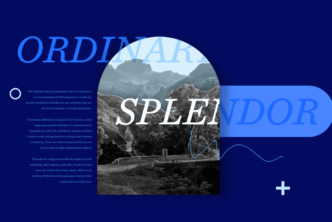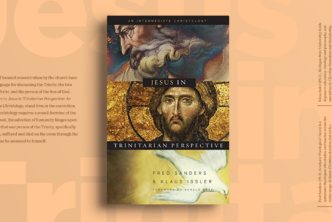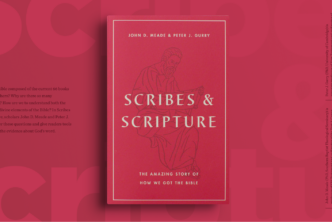“Commit yourself to the serious reading of books, and your life will be enlightened.”
These are the opening words to Tony Reinke’s Lit! A Christian Guide to Reading Books, a volume about the importance, dangers, and methodology of reading as a Christian. The book itself is a short read, which you may be able to knock out in a day or two, and I say it is well worth your time to do so.
Scripture, words, and images
Reinke rethinks everything we’ve assumed about books and literacy.
Beginning with a boiled-down doctrine of Scripture, Reinke deftly takes us from God’s written law at the thunderous mountainside of Sinai to the selection of which novel to read on your Christmas vacation. His view of reading is grounded in Scripture and the gospel. He stresses emphatically that we must, as Christians, read temporal and imperfect books in light of the eternal and perfect book. From this perspective, with discernment from the Holy Spirit, we ought to strive in all we do (and read) to test everything, hold fast what is good, and abstain from every form of evil (1 Thessalonians 5:21–22).
Reinke moves from this foundation of Scripture-centered discernment into a helpful discussion of the second commandment, regarding images. Moses exhorted the Israelites not to make images representing God, on the basis that when God descended on that mountain he took no form. We ought not give him a form he has not prescribed. But how does that translate to today’s culture, where few (if any) are sculpting statues of God to worship?
Our culture is saturated in images of all kinds, from video games to Instagram to television and movies, yet Reinke rightly points out that images can only communicate so much without the use of a caption. God chose to communicate his truth in the written word; it is a far better vessel of communication than any picture. Reinke warns the reader, as do the pages of Scripture, not to elevate images to a place in our lives where they engender our worship or adoration. After all, centuries after Moses instructed the people of God, they were carried into exile, chiefly for trading God’s word for images.
Worldviews and reading
Reading with discernment depends heavily on our particular worldview—it determines the perspective from which we read. Reinke states that this process of constructing our Christian worldview necessarily begins with the direct study of Scripture.
By reading Scripture under the illuminating grace of the Holy Spirit, we develop biblical convictions that make us competent to discern truth from lies, goodness from evil, and beauty from ugliness. Before we can be discerning, we must be informed by a direct study of Scripture.
Once we have our worldview established, we can evaluate, test, and learn from the worldviews represented in literature. For “[n]ovelists animate a worldview by placing it within in a depiction of life. Literature gives a worldview arms, legs, ears, hands, and mouths.” Reinke notes that it would be rare indeed if a particular worldview represented by an author were entirely false. It is nearly impossible to get everything wrong! So what nuggets of beauty or truth may remain unmarred in a particular book?
Treasuring truth where it is found
All truth is from God; and consequently, if wicked men have said anything that is true and just, we ought not to reject it; for it has come from God. Besides, all things are of God; and, therefore, why should it not be lawful to dedicate to his glory everything that can properly be employed for such a purpose?
—John Calvin, as quoted by Tony Reinke
There is a world of truth and beauty to be discovered in non-Christian and Christian literature alike; they ought not to be rejected because of label, like “secular” or “fantasy.” But certainly not all books are to be accepted across the board. How do we discern which books to avoid? Reinke lays out some helpful guidelines, such as whether the book is right for the reader’s age (regarding children specifically), whether they glorify evil (rather than merely mentioning it and showing the consequences of it), and whether they offend your conscience. Chapter 5 closes appropriately with a call to “treasure whatever is true, honorable, just, pure, lovely, commendable, excellent, or praiseworthy (Phil. 4:8)—wherever it is found.”
And that’s just the first half of the book. The second half is loaded with tips and tricks he’s gathered from years of book reading and shared here to help other readers make the most of their precious time. I have found his advice to be practical and extremely beneficial to my own reading habits (or disciplines, I should say).
Reading recommendations
First, I recommend reading Lit! whether you are a pastor, professor, student, or layman. This book will help recalibrate you to read from a gospel- and Bible-centric perspective, as well as giving a plethora of helpful tips and guidelines for efficient, thorough, and discerning reading. Additionally, Reinke writes with clarity and wit, which makes this book not simply helpful and informing, but also fun.
I spoke with Tony Reinke, and he listed his top five most-used resources in Logos Bible Software for me to share:
- D. A. Carson “Love of God” Collection (3 vols.)
- A New Testament Biblical Theology: The Unfolding of the Old Testament in the New by G. K. Beale
- Commentary on the New Testament Use of the Old by D. A. Carson and G. K. Beale
- The John Piper Sermon Manuscript Library (1980–2009)
- Timothy Keller Sermon Archive, 1989–2011 (1,233 sermons)
Here are a few additional books related to the topic at hand:
- How to Read the Bible Book by Book by Gordon Fee and Douglas Stuart
- How to Read the Bible for All Its Worth by Gordon Fee and Douglas Stuart
- How to Read the Bible Collection (4 vols.)
- Crazy Busy by Kevin DeYoung
What books have most influenced you?





